 As the humid summer days grow longer, tall sunflower stalks follow the path of the dawning sun until shadows appear under the moonlit sky. Then, eager for a new day with endless possibilities, the yellow giants twirl around in anticipation of the sun’s kisses in the morning. While many cling to the flower’s intense focus on the hope of a new dawn, I cringe at their faces, remembering Mrs. Julie and longing for the days of journals and daily phone calls. My heart yearns to find solace sitting next to her, eating chunky monkey ice cream on the days that my high school and college years seemed to turn upside down. It is the smell of Ragu alfredo sauce, a meal that her and I both loved, while our families despised it. It is the yellow highlighter, blue pen, and colored ribbons in her Bible. It is when the choir sings, “Through the Garden.” But, when the congregation yells, “Praise God!” in song, I see her husband’s face and hear his voice. I crawl within myself, terrified of more hours of yelling and screaming, manipulation and berating. It is a foul smell in the car, an extremely heavy-set man passing out tracts. It is the man holding Scripture signs or someone talking through a megaphone. It is a preacher on Sunday morning talking about a person being “carnal” or needing to repent. But I never knew I suffered a loss.
As the humid summer days grow longer, tall sunflower stalks follow the path of the dawning sun until shadows appear under the moonlit sky. Then, eager for a new day with endless possibilities, the yellow giants twirl around in anticipation of the sun’s kisses in the morning. While many cling to the flower’s intense focus on the hope of a new dawn, I cringe at their faces, remembering Mrs. Julie and longing for the days of journals and daily phone calls. My heart yearns to find solace sitting next to her, eating chunky monkey ice cream on the days that my high school and college years seemed to turn upside down. It is the smell of Ragu alfredo sauce, a meal that her and I both loved, while our families despised it. It is the yellow highlighter, blue pen, and colored ribbons in her Bible. It is when the choir sings, “Through the Garden.” But, when the congregation yells, “Praise God!” in song, I see her husband’s face and hear his voice. I crawl within myself, terrified of more hours of yelling and screaming, manipulation and berating. It is a foul smell in the car, an extremely heavy-set man passing out tracts. It is the man holding Scripture signs or someone talking through a megaphone. It is a preacher on Sunday morning talking about a person being “carnal” or needing to repent. But I never knew I suffered a loss.
According to the authors of Managing Traumatic Stress Through Art (pg. 74), these feelings of loss are “a natural reaction to actual or imagined losses that vary according to the type and impact of the trauma. It is common to experience a loss of one or more of the following as a result of the trauma:
-
- A sense of safety and security
- Meaning and purpose in life
- Physical health or body integrity
- The ability to relate effectively with others
- Self-esteem or identity
- Someone or something you love”
In my life, there was no viewing or physical casket. No funeral or solemn prayer. There was no placement of an actual body or a covering of earth with beautiful flowers in honor of their passing. Rather, I was left in a confused state with only the overwhelming emotions and harrowing memories left behind. I lost not only my best-friend and mentor, but I lost my childhood innocence and wonder, and I no longer knew the person I had become. It turns out that recognizing and accepting these losses are the first steps in allowing the actual grieving process to begin, in order to allow the pains to lesson over time, even if they never truly go away. It is vital to look deep within and ask what losses you have endured from the trauma. What has changed, shifted, or shattered into a million pieces? Recognizing these feelings and having compassion on yourself in a way that allows space to grieve and seek support as needed will begin the path to acceptance and healing.
This exercise involves writing a letter or poem to someone who has experienced trauma(s) similar to your own. For those not familiar, I was under a husband-wife couple that was like a miniature cult, brainwashing and isolation included. The wife, Mrs. Julie, was a dear friend, but her husband, Brother Thomas, was abusive mentally, emotionally, sexually, and spiritually, but only physically abusive towards his family. Because I could not wrap my mind around another situation similar enough to my own experiences at the time, I wrote my letter as if to another girl under those mentors, since they took so many teenagers under their wings. Mrs. Julie especially took in young teen girls to help mentor and encourage them. Here is my letter as if to one of those girls. It has given me a sense of not being alone anymore, and even a shift in perspective to potentially helping others. I can see another girl and have compassion on her, rather than my own tendency to say, “I should have known. I should have seen it. Why did I not just get out?” It has helped to have compassion on myself and it was key to starting inner child work.
Dear Sister,
I pray this letter finds you well, or so I hope. Prayer isn’t really a thing for me these days. How about you?
They wanted us to meet up with their standard of living and godliness, but it was a standard that could never be attained. She loved us dearly, but she was likely too entrenched in survival mode and self-presentation to see the damage it caused: that intense feeling of failure, mounted with sheer guilt and shame. I know the mask and I know the pain. I feel that hurt. But you’re not alone. You weren’t alone then and you’re not alone now.
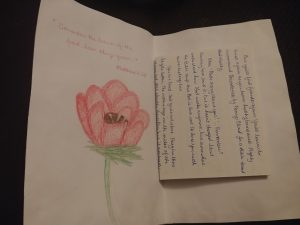 He couldn’t have cared less with the facade he put on, somehow greater than his weight [He was easily 400lbs or more and used it for intimidation]. Remember Rachel? Remember Amanda? Rachel had the guts to stand and Mrs. Julie protected Amanda from him. I don’t know what all you went through, but I know the loss of innocence. I know the fears and panic from everyday things that others do not understand.
He couldn’t have cared less with the facade he put on, somehow greater than his weight [He was easily 400lbs or more and used it for intimidation]. Remember Rachel? Remember Amanda? Rachel had the guts to stand and Mrs. Julie protected Amanda from him. I don’t know what all you went through, but I know the loss of innocence. I know the fears and panic from everyday things that others do not understand.
I still sit through church services nervous and terrified. I never know what the man [preacher] is going to say or when the skeletons will show. Every message is a reminder of my failure. But it’s not a failure. You’re not a failure. You are strong for continuing on. You are strong for getting out when you did, no matter how long that took.
The crazy is over and now it’s picking up the pieces and finding joy in life again somehow. It’s finding purpose again outside the crazy. It’s not as simple as brushing your shoulders off, but it’s a day by day, moment by moment process.
“God’s crazy about you”…. Remember? She may have said it, but it hasn’t changed. I don’t understand how God works anymore, but somewhere the Bible says that God is love, and He loves you with an everlasting love.
The journey ahead is long, but it’s not your fault. You’re beautiful. You’re amazing because you are fearfully and wonderfully made. In college, I thought it would be better if a car swerved and hit me because I would no longer be the reason they were hurting, but someone shared that verse with me and told me that the rest of my life that didn’t happen would be the wonder of God’s work on me. Marvelous are thy works. That’s you.
It feels like my marriage is messed up many days because of what happened, but you know what? A real man isn’t like Thomas. He cares and he stays. He loves and encourages. In marriage, we support each other through the good and bad times.
I don’t have the answers for Bible reading, church, prayer, soul-winning, communication or authority. Submission is all jacked up. But some day, we can be stronger for it somehow. Someday, we can help someone else because of what we’ve been through and cannot change.
God will judge him someday if no one gets to him first. And even if they do, God will still judge him someday. Maybe then he will know where to stick that stupid pig, chicken and rooster.
You’ll find friends again. You’ll learn to trust again as you learn about healthy boundaries (highly recommend “Boundaries” by Henry Cloud 🙂 ).
You’re loved. And you’re not alone. Hang in there. You’re stronger than you feel.
Chloe
*For more art therapy ideas from Managing Traumatic Stress through Art, check out the full list of exercises from the blog post: “Managing Traumatic Stress Through Art.“
********
Shop at our Amazon store! As an Amazon Influencer, this website earns from qualifying purchases.

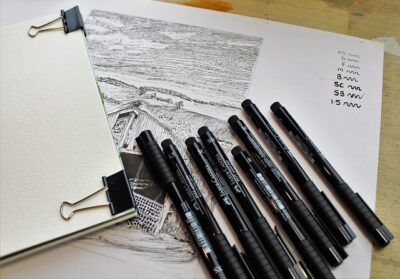
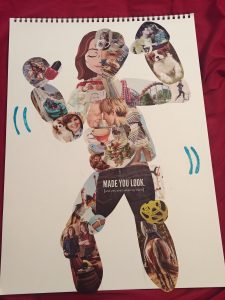 Plunging deep into the plush couch cushions, nothing beats the cozy holiday flavor of warm
Plunging deep into the plush couch cushions, nothing beats the cozy holiday flavor of warm 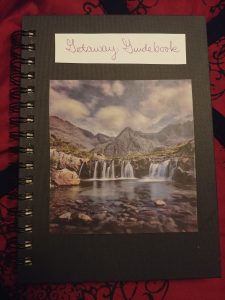 If you could go on vacation anywhere you wanted, where would you go? Would it be the warm, sunny beaches of Hawaii or the Caribbean? The tantalizing, exquisite tastes of Italy or Greece? Maybe more of a rugged adventure in the Outback like the
If you could go on vacation anywhere you wanted, where would you go? Would it be the warm, sunny beaches of Hawaii or the Caribbean? The tantalizing, exquisite tastes of Italy or Greece? Maybe more of a rugged adventure in the Outback like the 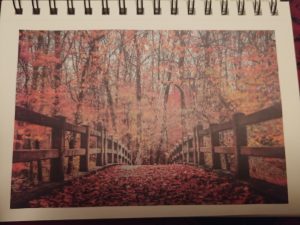
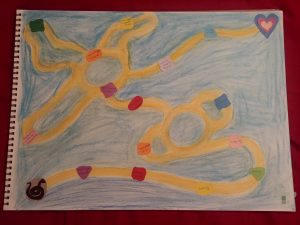 Where do you see yourself in terms of healing by next month? What about in six months or a year? Five years? Ten years? I saw myself still struggling but hopefully managing better. Not long before this exercise, I finally accepted that depression, anxiety, complex PTSD, triggers, intrusive thoughts and an emotional roller coaster were simply my lot in life, one I may have to deal with until the day I die. I stopped fighting its existence and settled on simply managing. This exercise has been a challenge in terms of realizing and accepting that there truly CAN BE a point of healing. After all the counsel I had received with little progress in nine years, five years of rotating therapists thanks to a government system, my current and absolutely amazing therapist thinking I was mentally healthy- until it all became visible with the next drama-filled, controlling church situation, that is!- and all of the messages on “whatsoever state I am, therewith to be content” (KJV, Philippians 4:11), I gave up hope of having my life back. But this exercise gave me a light at the end of the tunnel, a path laden with stepping stones to get there. I could visibly see the areas I needed to develop in to get to where I wanted to be mentally, emotionally, and hopefully, spiritually.
Where do you see yourself in terms of healing by next month? What about in six months or a year? Five years? Ten years? I saw myself still struggling but hopefully managing better. Not long before this exercise, I finally accepted that depression, anxiety, complex PTSD, triggers, intrusive thoughts and an emotional roller coaster were simply my lot in life, one I may have to deal with until the day I die. I stopped fighting its existence and settled on simply managing. This exercise has been a challenge in terms of realizing and accepting that there truly CAN BE a point of healing. After all the counsel I had received with little progress in nine years, five years of rotating therapists thanks to a government system, my current and absolutely amazing therapist thinking I was mentally healthy- until it all became visible with the next drama-filled, controlling church situation, that is!- and all of the messages on “whatsoever state I am, therewith to be content” (KJV, Philippians 4:11), I gave up hope of having my life back. But this exercise gave me a light at the end of the tunnel, a path laden with stepping stones to get there. I could visibly see the areas I needed to develop in to get to where I wanted to be mentally, emotionally, and hopefully, spiritually. This is one that I LOVE already: The Comfort Box! The idea is to take any box with a lid (shoe box, file box, oatmeal box, etc.) and fill it with items that are comforting, set aside for times of stress, depression, anxiety, fears, and overwhelming emotions. One of the best parts is that the box can be as plain or as decorated as desired, not requiring any level of craftiness or artistic ability, but decorating it can be just as therapeutic as the items inside. For mine, I chose a simple file box from Walmart and covered it in soft, snuggle-fabric that was seventy-percent off on President’s Day.
This is one that I LOVE already: The Comfort Box! The idea is to take any box with a lid (shoe box, file box, oatmeal box, etc.) and fill it with items that are comforting, set aside for times of stress, depression, anxiety, fears, and overwhelming emotions. One of the best parts is that the box can be as plain or as decorated as desired, not requiring any level of craftiness or artistic ability, but decorating it can be just as therapeutic as the items inside. For mine, I chose a simple file box from Walmart and covered it in soft, snuggle-fabric that was seventy-percent off on President’s Day.
